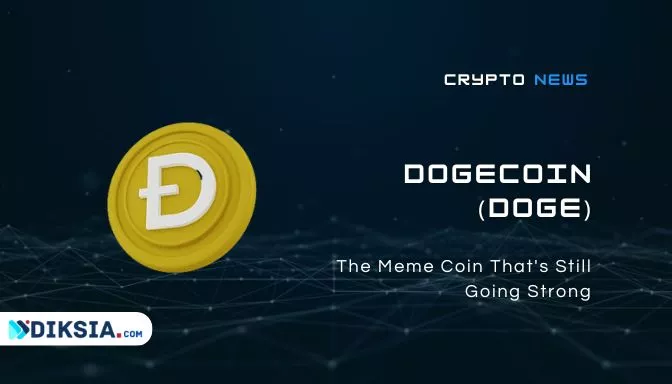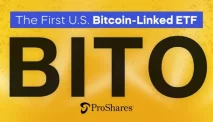The coin was launched on December 6, 2013, and quickly gained popularity among internet users. The coin’s community grew rapidly on social media platforms such as Reddit and Twitter, where users exchanged tips, jokes, and memes about Dogecoin. The coin also attracted attention from mainstream media outlets such as CNN, Forbes, and The Wall Street Journal.
What is the development roadmap for Dogecoin?
Dogecoin does not have a formal development roadmap or a clear vision for its future. The coin’s development is largely driven by its community and its core developers, who work on improving the coin’s functionality, security, and performance. Some of the recent developments for Dogecoin include:
- In February 2014, Dogecoin merged its mining process with Litecoin, which means that miners can mine both coins at the same time using the same hardware. This increased the security and efficiency of both networks.
- In March 2014, Dogecoin switched from a random block reward system to a fixed block reward system. This means that miners receive 10,000 DOGE for every block they mine, regardless of the difficulty level.
- In September 2014, Dogecoin implemented a hard fork that reduced its inflation rate by 50%. This means that the coin’s annual supply growth rate decreased from 100% to 5%.
- In February 2018, Dogecoin updated its core wallet to version 1.10, which improved its compatibility, stability, and security. The update also enabled Segregated Witness (SegWit), a protocol upgrade that increases the capacity and speed of transactions.
- In June 2019, Dogecoin released its core wallet version 1.14, which improved its synchronization speed, network performance, and user interface. The update also fixed some bugs and vulnerabilities.
- In July 2021, Dogecoin announced its core wallet version 1.14.4, which is expected to be released soon. The update will include important changes such as:
- Reducing the transaction fee from 1 DOGE to 0.01 DOGE, which will make transactions cheaper and faster.
- Increasing the block size from 1 MB to 4 MB, which will allow more transactions to be processed in each block.
- Enabling the CheckTemplateVerify (CTV) feature, which will enable more complex and flexible transactions such as smart contracts and layer-2 solutions.
Who are the key people behind Dogecoin?
The key people behind Dogecoin are:
- Billy Markus: The co-founder and original developer of Dogecoin. He is also known as “Shibetoshi Nakamoto” or “BillyM2k”. He left the project in 2015 due to harassment and personal issues. He currently works as a software engineer at Cash App.
- Jackson Palmer: The co-founder and original marketer of Dogecoin. He is also known as “ummjackson”. He left the project in 2015 due to disillusionment with the cryptocurrency industry. He currently works as a product manager at Adobe.
- Ross Nicoll: The lead developer and maintainer of Dogecoin. He is also known as “rnicoll”. He joined the project in 2014 and has been working on improving the coin’s functionality, security, and performance. He currently works as a senior lecturer at the University of Dundee.
- Patrick Lodder: The core developer and advisor of Dogecoin. He is also known as “patricklodder”. He joined the project in 2014 and has been working on enhancing the coin’s features, scalability, and usability. He currently works as a software engineer at Chainlink Labs.
- Max Keller: The core developer and tester of Dogecoin. He is also known as “langerhans”. He joined the project in 2014 and has been working on fixing bugs, vulnerabilities, and compatibility issues. He currently works as a software engineer at Bitpanda.
- Michi Lumin: The core developer and researcher of Dogecoin. He is also known as “michilumin”. He joined the project in 2018 and has been working on exploring new technologies, protocols, and innovations for Dogecoin. He currently works as a software engineer at Google.
Technology
What is the underlying technology of Dogecoin?
Dogecoin is based on the Litecoin codebase, which in turn is based on the Bitcoin codebase. This means that Dogecoin shares some of the same technology and features as Bitcoin and Litecoin, such as:
- Blockchain: A distributed ledger that records all transactions that occur on the network. Each transaction is grouped into a block, which is then linked to the previous block, forming a chain of blocks. The blockchain ensures that transactions are transparent, immutable, and verifiable.
- Proof-of-Work (PoW): A consensus mechanism that secures the network and validates transactions. PoW requires miners to solve complex mathematical problems using their computing power in order to create new blocks and earn rewards. PoW prevents malicious actors from tampering with or reversing transactions.
- Scrypt: A hashing algorithm that converts data into a fixed-length output called a hash. Scrypt is used by Dogecoin to generate new blocks and verify transactions. Scrypt is different from Bitcoin’s SHA-256 algorithm, as it requires more memory than processing power. This makes it more resistant to specialized hardware such as ASICs (Application-Specific Integrated Circuits), which can dominate mining and centralize the network.
How does Dogecoin work?
Dogecoin works by following these steps:
- Step 1: A user initiates a transaction by sending DOGE to another user’s address. The transaction contains information such as the amount, the sender’s address, the receiver’s address, and a digital signature that proves ownership of the coins.
- Step 2: The transaction is broadcasted to the network and reaches other nodes (computers) that run the Dogecoin software. The nodes validate the transaction by checking its validity, authenticity, and uniqueness.
- Step 3: The transaction is added to a pool of unconfirmed transactions, where it waits to be included in a block. Miners compete to create new blocks by solving a cryptographic puzzle using the Scrypt algorithm. The first miner who solves the puzzle gets to create the next block and earn the block reward of 10,000 DOGE plus the transaction fees.
- Step 4: The new block is appended to the blockchain and propagated to the network. The nodes update their copy of the blockchain and confirm the transaction. The receiver can now see and spend the DOGE that they received.
What are the advantages of Dogecoin’s technology?
Some of the advantages of Dogecoin’s technology are:
- Fun and friendly: Dogecoin’s technology is designed to be fun and friendly, as it uses a humorous meme as its logo and slogan. The coin’s technology also reflects its community’s values, such as generosity, kindness, and positivity.
- Fast and cheap: Dogecoin’s technology is designed to be fast and cheap, as it has a short block time of 1 minute and a low transaction fee of less than a cent. This makes it suitable for microtransactions, tipping, and online payments.
- Generous and charitable: Dogecoin’s technology is designed to be generous and charitable, as it has an unlimited supply and a high inflation rate. This means that there will always be new coins entering the market, which reduces the risk of scarcity and deflation. This also encourages spending rather than hoarding, which benefits various causes and projects.
- Popular and viral: Dogecoin’s technology is designed to be popular and viral, as it has a strong online presence and a high level of social media engagement. The coin’s technology also benefits from its viral marketing and its endorsement by celebrities such as Elon Musk.
Market
What is the current market capitalization of Dogecoin?
The current market capitalization of Dogecoin is $10,799,055,391 USD as of October 30, 2021. This means that the total value of all Dogecoins in circulation is about $10.8 billion USD. The market capitalization of Dogecoin is calculated by multiplying the current price of DOGE ($0.076910 USD) by the current circulating supply of DOGE (140,382,580,713 DOGE).
What is the trading volume of Dogecoin?
The trading volume of Dogecoin is $407,359,494 USD as of October 30, 2021. This means that the total amount of DOGE that was traded in the past 24 hours is about $407 million USD. The trading volume of Dogecoin is calculated by adding up the volume of all trades that involved DOGE on various exchanges and platforms.
What are the top exchanges that list Dogecoin?
Some of the top exchanges that list Dogecoin are:
- Binance: A global cryptocurrency exchange that offers trading in more than 300 cryptocurrencies, including DOGE. Binance supports various trading pairs for DOGE, such as DOGE/USDT, DOGE/BTC, DOGE/ETH, DOGE/BNB, and DOGE/BUSD.
- Coinbase: A US-based cryptocurrency exchange that offers trading in more than 100 cryptocurrencies, including DOGE. Coinbase supports various trading pairs for DOGE, such as DOGE/USD, DOGE/EUR, DOGE/GBP, DOGE/BTC, and DOGE/USDC.
- Kraken: A US-based cryptocurrency exchange that offers trading in more than 70 cryptocurrencies, including DOGE. Kraken supports various trading pairs for DOGE, such as DOGE/USD, DOGE/EUR, DOGE/BTC, and DOGE/ETH.
- Huobi: A Singapore-based cryptocurrency exchange that offers trading in more than 200 cryptocurrencies, including DOGE. Huobi supports various trading pairs for DOGE, such as DOGE/USDT, DOGE/BTC, DOGE/ETH, and DOGE/HUSD.
- OKEx: A Malta-based cryptocurrency exchange that offers trading in more than 400 cryptocurrencies, including DOGE. OKEx supports various trading pairs for DOGE, such as DOGE/USDT, DOGE/BTC, DOGE/ETH, and DOGE/OKB.
Investment
Is Dogecoin a good investment?
Dogecoin is a risky and speculative investment, as its price is highly volatile and influenced by various factors, such as:
- Supply and demand: The supply and demand of Dogecoin affect its price, as more buyers than sellers will push the price up, and vice versa. The supply and demand of Dogecoin are influenced by factors such as its inflation rate, its popularity, its adoption, and its availability on exchanges and platforms.
- Market sentiment: The market sentiment of Dogecoin affects its price, as positive or negative emotions, opinions, and expectations of investors and traders will drive the price up or down. The market sentiment of Dogecoin is influenced by factors such as its community, its media coverage, its celebrity endorsement, and its meme potential.
- Technical analysis: The technical analysis of Dogecoin affects its price, as patterns, trends, indicators, and signals on the price charts will influence the buying and selling decisions of investors and traders. The technical analysis of Dogecoin is influenced by factors such as its historical performance, its volatility, its liquidity, and its resistance and support levels.
Dogecoin is not a good investment for long-term investors who seek stable returns and low risk. Dogecoin is more suitable for short-term traders who seek high returns and high risk. Dogecoin is also more suitable for enthusiasts who seek fun and entertainment rather than profit.
What are the risks of investing in Dogecoin?
Some of the risks of investing in Dogecoin are:
- Price volatility: Dogecoin’s price is highly volatile and unpredictable, as it can change dramatically in a short period of time. This means that investors and traders can lose a lot of money or miss out on opportunities if they buy or sell at the wrong time.
- Market manipulation: Dogecoin’s market is susceptible to manipulation by large holders, whales, or groups who can influence the price by buying or selling large amounts of DOGE. This means that investors and traders can be deceived or exploited by these actors who can create artificial pumps or dumps.
- Regulatory uncertainty: Dogecoin’s regulatory status is unclear and varies across different jurisdictions. This means that investors and traders can face legal issues or restrictions if they buy or sell DOGE in certain countries or regions. This also means that Dogecoin can be banned or taxed by governments or authorities who can affect its adoption and usage.
- Security breaches: Dogecoin’s security is dependent on the security of the network, the exchanges, and the wallets that store DOGE. This means that investors and traders can lose their DOGE if the network is attacked by hackers or malicious actors who can compromise the integrity or availability of the blockchain. This also means that investors and traders can lose their DOGE if the exchanges or wallets are hacked or compromised by thieves or fraudsters who can steal or access their funds.
How can I buy Dogecoin?
There are two main ways to buy Dogecoin: through an exchange or through a wallet.
- Buying through an exchange: An exchange is a platform that allows users to buy and sell cryptocurrencies using fiat currencies (such as USD) or other cryptocurrencies (such as BTC). To buy Dogecoin through an exchange, users need to register an account on the exchange, verify their identity, deposit funds (either fiat or crypto), and place an order to buy DOGE at the current market price or a desired price. Some of the popular exchanges that offer DOGE are Binance, Coinbase, Kraken, Huobi, and OKEx.
- Buying through a wallet: A wallet is a software or hardware device that allows users to store, send, and receive cryptocurrencies. To buy Dogecoin through a wallet, users need to download and install a wallet that supports DOGE, such as Exodus, Atomic Wallet, Ledger Nano S, or Trezor One. Then, users need to find a service that allows them to buy DOGE using fiat currencies (such as USD) or other cryptocurrencies (such as BTC). Some of these services are Changelly, Simplex, MoonPay, or CoinSwitch. Users need to follow the instructions on the service’s website or app to complete the purchase.
Conclusion
Dogecoin is a cryptocurrency that was created as a joke in 2013 by software engineers Billy Markus and Jackson Palmer. The coin’s name and logo are based on the popular internet meme “doge”, which features a Shiba Inu dog with comic sans captions. Despite its humorous origin, Dogecoin has gained a loyal fan base and a vibrant community that uses it for tipping, fundraising, and online transactions.






